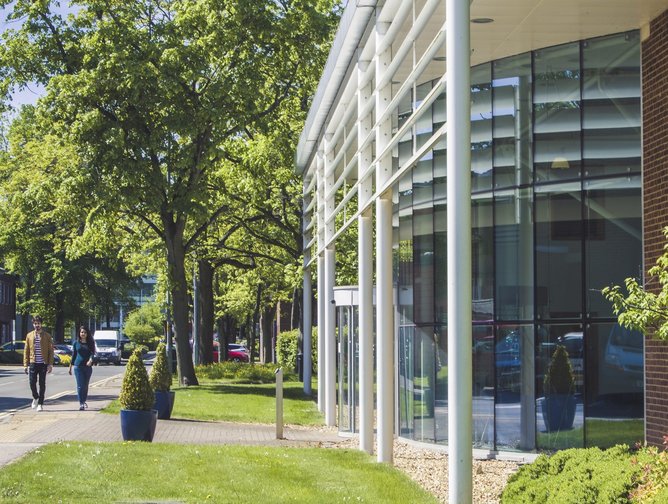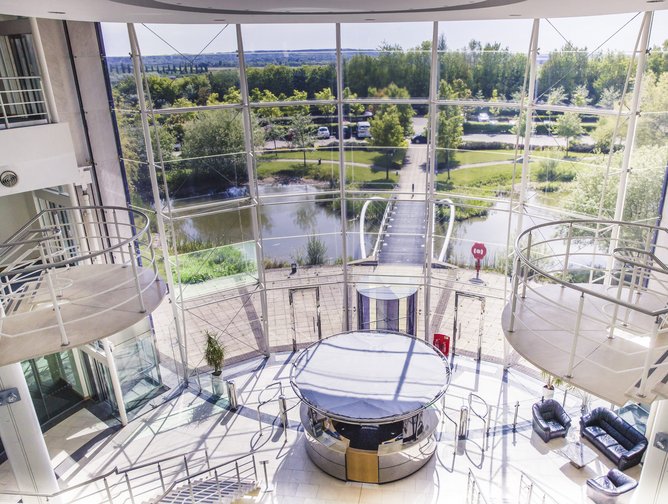CSM: Navigating the complexity of supply chain & procurement
Dr Soroosh Saghiri began his career journey in industrial engineering, “it was a fascinating time,” says Saghiri. “We learned some basic tools and theories around managing activities and businesses from an operations perspective, including product design, process design, and quality management.”
While purchasing activities were a part of this, Saghiri explains “we didn’t have a specific topic on procurement management, but everything was around managing operations and supply chain management. In the 1990s, it was the early days of understanding the value and massive publicity of the supply chain.
“The very first book I read about supply chain management was in the mid-1990s and we learned that if you want to do something for businesses, it should be supply chain-wide. That is when I started my doctorate at the University of East Anglia focusing on supply chain strategies,” he adds.
Today, Saghiri is the Senior Lecturer of Supply Chain Management and Course Director for Executing MSC in Logistics and Supply Chain at Cranfield School of Management.
The history of Cranfield School of Management
Established in 1967, Cranfield School of Management is a unique institution with over 96 courses dedicated to postgraduate studies, including MSC and doctorate and business executive courses including marketing, supply chain, MBAs, human resources, and finance, which the school always ranks highly. “Our rankings signify the quality of our course and how popular they are for UK, European, and international students. We are training the future business leaders,” says Saghiri.
Supplier diversity
As supply chains become more complex structures and processes, Saghiri explains that “leaders in this space will need to be more open to different approaches to manage supply chains, open to different solutions, and open to supplier diversity. We need to make sure that we are using a wide range of suppliers from all different backgrounds and different areas, whether they are individuals or companies, because they may have innovative ideas and practical solutions that can help to enhance the supply chain.
“These days it is not individual companies, but supply chains who are competing. And those supply chains are dependent on hundreds or thousands of suppliers all around the world. The more diverse we are, the more benefits we can have from the supply chain, and ultimately be more effective and efficient.”
Technology advancements in the supply chain and procurement
When it comes to the level of technological advancements in supply chain and procurement, Saghiri says “it’s huge, all different types of industry 4.0 technologies — robotics, big data analytics, artificial intelligence — these are very fast-moving in all aspects of the supply chain, which will lead to business models moving towards more digital procurement activities in terms of how you run tenders, deal with suppliers, manage relationships, monitor quality and delivery performance.”
In general, Saghiri’s main focus is on the information systems, the digital supply chains, and how the industry produces the quality of data needed to generate valuable analysis and insights that can be shared. However, these are quite complex topics due to the network structure and connectivity of the supply chain.
“The conceptual model for this is something that is being developed. We need to bear in mind both the practical aspects and the integrations, as well as the fact that most of the time when we are talking about global supply chains, we need to consider managing relationships across multiple tiers of suppliers, which is quite complex,” says Saghiri.
With this in mind, the university has embedded supply chain complexity theories into its studies. “We need to manage these complexities, understand the challenges, risk and resilience. So while digital transformation will help to manage the flow of data better, in most cases, a complete redesign of the whole process will need to be done alongside the new technology. It will be a long journey — technology will be at its core — but it will depend on how well we understand and analyse the supply chain data, and this is where the likes of big data analytics and artificial intelligence have been beneficial giving use intelligence into the supply chain and consumer market so that hopefully we will be in a much better position to respond to future disruptions.”
Top priorities for supply chains and procurement functions for 2022
As we start 2022, Saghiri explains that there are many things that procurement functions should prioritise to secure the flow of material supply from around the world. “COVID-19 was a massive disruptor. It may take some time for some of those suppliers to go back to full capacity. Some were totally wiped out, so we will need to develop a new generation of suppliers and new technologies that can help secure products and materials. Attached to the challenges of COVID-19, we have trade wars, economic changes, and social changes that have implications. Resilience will be something that, on both the operations and strategy side of the business, will be looking to improve in order to battle risk and uncertainties.
“So that is one priority for procurement, another is continuous digital transformation and adopting an effective strategy. It’s not just about applying new technologies, having everything automated and sensors everywhere, is no good if they are not aligned with a clear strategy on how the entire supply chain is going to be managed. We will have huge amounts of data generated, so that will be another challenge for procurement and supply chain leaders going forward. How do we handle that data?
“Finally, we need to evaluate whether there are enough leaders in this function. Do we need to train more in this area? What lesson do they need to learn? This will be a long journey, but we need to assess what is needed when it comes to procurement and supply chain leadership,” concludes Saghiri.






